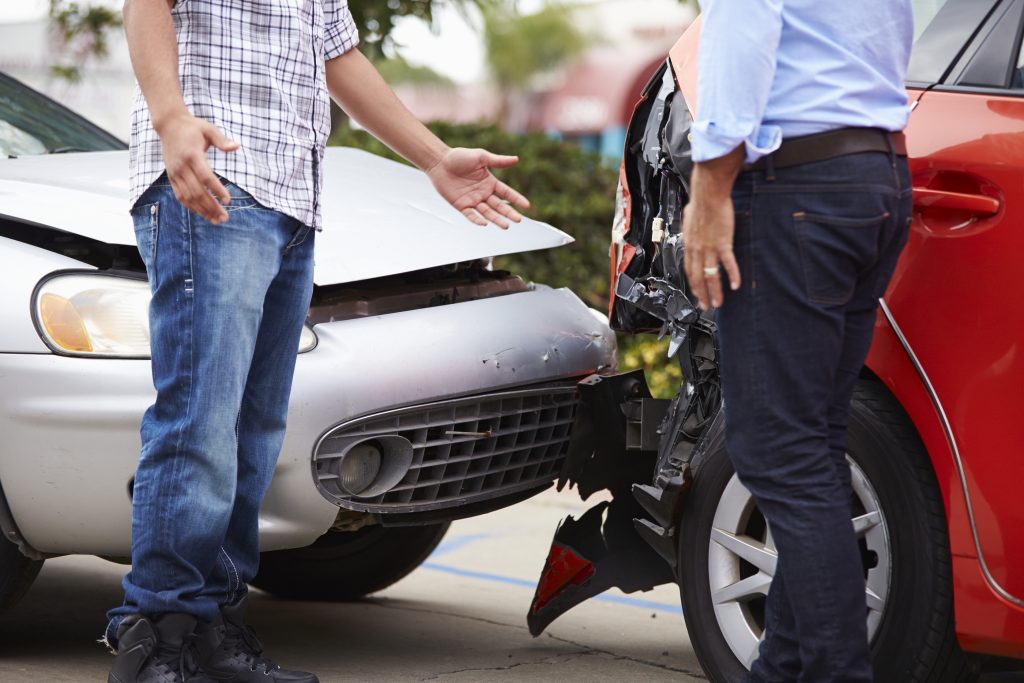
If you live in the metropolitan Atlanta area, you know driving on our congested streets can be a dangerous proposition at any time, but our interstates and surface streets become even more treacherous on rainy days. According to USClimateData.com, our city experiences rainfall an average of 117 days per year or just over twice per week. So at least two times per week, most Atlantans are on the road driving with the enhanced dangers of falling rain and/or wet pavement. This is where our car accident law firm can help.
According to the Federal Highway Administration, nearly one fourth of all vehicle crashes nationwide are weather related. Of those weather related crashes, 74% occur on wet pavement and 46% occur during rainfall. By comparison, only 12% occur on icy pavement and only 14% occur on snowy or slushy pavement. So rainy wet roads on average contribute to more than 5 times as many accidents nationwide as wintry, icy roads. Drivers tend to slow down and give ice and snow much more respect in their driving than they do the much more common rainy weather. However, because the dangers of rainy conditions and wet pavement are not appreciated by many drivers, rainy weather can be much more dangerous than wintry weather.
Rain causes driving hazards including:
- Decreased visibility
- Decreased tire traction
- Hydroplaning
- Brake failure due to wet brakes
In Georgia, the law requires all drivers to turn their headlights on when it is raining or at any other time when weather conditions do not permit drivers to clearly discern vehicles or people at least 500 feet in front of them. Requiring headlights is as much if not more about helping other drivers clearly see your vehicle as it is about helping you be able to see better. In addition to the headlight requirement, Georgia law also requires that drivers not drive at a faster speed than is safe and appropriate for the weather conditions. Thus, while the posted speed limit on a roadway may be 55 mph during good weather, when it is raining it may be unlawful to travel at 55 mph on that same road if it cannot be done safely. Many accidents are caused on rainy days by drivers whose only violation of Georgia law is simply driving too fast for the weather conditions even though they were not technically speeding. This is still a misdemeanor violation of Georgia law and can lead to a fine in criminal court and civil liability for negligent driving.
What should you do if you are injured in an accident caused by a negligent driver’s failure to take precautions in rainy weather? First, you should always call 911 to report the accident and make sure all injured parties receive immediate medical attention. Tell the responding police officer as much detail about how the accident occurred as you can remember and tell them everywhere on your body that you believe you may be injured. Most people have a tendency to downplay their injuries and not mention them all to the officer or EMT’s. However, because the police officer and EMT’s are making a report of what happened, it is important to tell them everything so that their reports are as complete as possible.
One of the first things the insurance company will be looking at when you file your injury claim is the injuries you reported on the scene to the police office and EMT’s. While not all injuries manifest themselves immediately after an accident, if you know of an injury and don’t report it to the officer then it gives insurance grounds to question whether it was truly caused by the accident when you later seek compensation for it.
Another important thing to do if possible after an accident on a rainy day is to take pictures of the scene of the accident. Particularly if it is continuing to rain, there is a temptation for many drivers involved in rainy weather accidents to just stay inside their cars throughout the police investigation. However, if you can do so safely, it is important to get out and take pictures of the accident scene during the rainy conditions because those conditions can never be exactly duplicated again to show the insurance company what it was like at the time their insured caused the accident that injured you.
Good personal injury attorneys can try their best to re-create the conditions to take demonstrative photographs the next time it rains at that location, but it will be virtually impossible to re-create the exact lighting conditions and exact amount of water on the road as existed at the time of your accident. So if you can safely photograph the scene at the time of the accident it is important to do so. If it is not safe to get out of your vehicle, then you should not do so, and should try to just take the best photos you can from inside your vehicle to at least depict the weather and lighting conditions outside.
Once you leave the scene of the accident, you should seek medical treatment right away for any injuries, and follow the treatment instructions of your treating physician. After that, contact an experienced Atlanta car accident attorney to discuss your case and your rights before having any contact with the at-fault driver’s insurance company.









